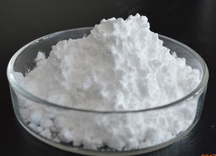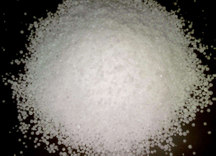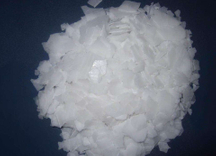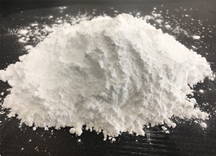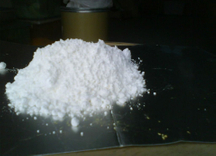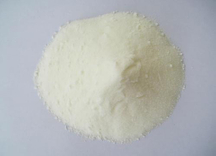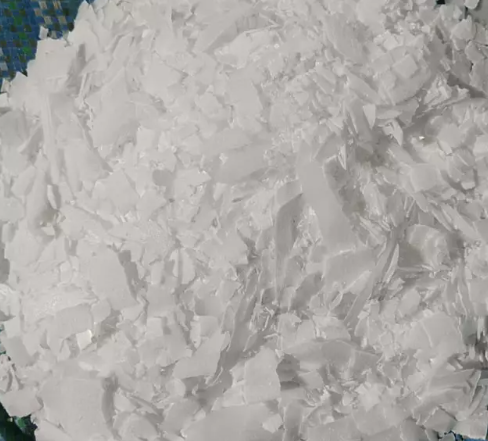
Phthalic anhydride is an organic compound that acts as an anhydride of phthalic acid. It's widely used in various industries, particularly in the production of plastics and resins.
Physical Characteristics
Phthalic anhydride is a white, crystalline solid that has a distinctive pungent odor. It is known for its high reactivity and is typically handled with care in industrial settings.
Melting Point: 131°C
Boiling Point: 295°C
Density: 1.53 g/cm³ (solid); 1.20 g/mL (molten)
Solubility: Slightly soluble in water, easily soluble in alcohols, benzene, and ether.
Key Identifiers
CAS Number: 85-44-9
Molecular Weight: 148.12 g/mol
Common Synonyms: Phthalic acid anhydride, 1,2-benzenedicarboxylic acid anhydride, 1,3-isobenzofurandione.
![Phthalic Anhydride2]()
Chemical Structure
The compound’s chemical structure includes two carboxyl groups (–COOH) that make it highly reactive. This structure allows phthalic anhydride to be a versatile intermediate in chemical synthesis, often used to create plasticizers, resins, and dyes.
The Production of Phthalic Anhydride
Phthalic anhydride is primarily produced through catalytic oxidation, but there are several methods available.
Catalytic Oxidation
The most common method for producing phthalic anhydride is the catalytic oxidation of ortho-xylene or naphthalene. In this process, vanadium pentoxide (V2O5) is used as a catalyst to facilitate the reaction with oxygen. This method is widely used because of its efficiency and high yield.
Catalyst: Vanadium pentoxide (V2O5)
Reactants: Ortho-xylene or naphthalene
Byproducts: Carbon dioxide (CO2)
The reaction proceeds at high temperatures, typically between 320-400°C.
Alternative Methods
Other production methods include the oxidation of o-xylene and naphthalene. These routes are used to achieve more atom-efficient results and sometimes produce additional byproducts like maleic anhydride.
Oxidation of o-xylene: This method yields phthalic anhydride and a small amount of maleic anhydride.
Key Chemical Reactions
1. Catalytic Oxidation of Ortho-Xylene:
2. [ C_6H_4(CH_3)_2 + 3 O_2 \rightarrow C_6H_4(CO)_2O + 3 H_2O ]Oxidation of Naphthalene:
[ C_10H_8 + 4 O_2 \rightarrow C_6H_4(CO)_2O + 2 CO_2 ]These reactions are central to industrial-scale phthalic anhydride production.
Comparison of Production Techniques
The traditional production method using naphthalene has been replaced by the more efficient oxidation of o-xylene. While the naphthalene method produces higher yields of byproducts, the o-xylene method is more atom-efficient and often preferred in modern production settings. The modern process is also more environmentally friendly, as it generates fewer unwanted byproducts.
In short, the newer techniques focus on efficiency and sustainability while maintaining high output of phthalic anhydride.
The Chemical Properties of Phthalic Anhydride
Phthalic anhydride is known for its reactivity and versatility, making it an essential intermediate in various chemical processes.
Reactivity and Versatility
Phthalic anhydride is highly reactive due to its anhydride functional groups. It easily undergoes several reactions:
Hydrolysis: When reacted with water, phthalic anhydride hydrolyzes to form phthalic acid.
Alcoholysis: Reacting with alcohols forms esters, which are important plasticizers for PVC (polyvinyl chloride). This reaction is essential in the production of flexible plastics used in numerous applications.
Ammonolysis: When reacted with ammonia, phthalic anhydride forms phthalimide, a key intermediate for pharmaceuticals and other organic compounds.
Solubility
Phthalic anhydride’s solubility varies in different solvents:
Water: Slightly soluble (6 g/100g at 25°C), but it becomes more soluble at higher temperatures.
Alcohols, Ether, and Benzene: Highly soluble in organic solvents like alcohols and ether, enhancing its versatility in industrial applications.
Stability and Environmental Behavior
Phthalic anhydride is stable under normal conditions but sensitive to moisture. It is a solid at room temperature and sublimes at higher temperatures, making storage and handling crucial in industrial processes.
It also reacts slowly with moisture in the air, so it must be kept in sealed containers to avoid hydrolysis into phthalic acid. Its stability in various environments affects its storage and application in the manufacturing of products like plasticizers, resins, and dyes.
Key Applications of Phthalic Anhydride
Phthalic anhydride has many uses across a variety of industries, making it a key compound in modern manufacturing.
1. Plasticizers for PVC
Phthalic anhydride is vital in the production of phthalate esters, which are used as plasticizers in PVC. These plasticizers are crucial for making PVC flexible, durable, and easier to process. They are widely used in products like:
Medical devices
Automotive parts
Flooring and cables
Phthalate plasticizers improve the performance and longevity of PVC, which is why they're essential in manufacturing industries.
2. Alkyd Resins in Coatings
Phthalic anhydride is also used to make alkyd resins, which are key ingredients in paints, varnishes, and industrial coatings. Alkyd resins offer properties like:
Improved adhesion
Weather resistance
Enhanced durability
These resins are commonly used in construction and automotive industries for coatings that need to withstand harsh conditions.
3. Dyes and Pigments
Phthalic anhydride is an important precursor for the production of dyes and colorants. Some common dyes made from phthalic anhydride include:
Quinizarin (used in textiles)
Phenolphthalein (used in inks and coatings)
These colorants are integral to industries like textiles, inks, and paints, providing vibrant, long-lasting colors.
4. Pharmaceuticals and Other Chemical Products
Phthalic anhydride is used to synthesize various intermediates, such as saccharin, a widely used sweetener, and phthalimide, used in pharmaceuticals. It also plays a role in the synthesis of:
Pesticides
Specialty chemicals
These applications demonstrate phthalic anhydride’s versatility beyond industrial uses.
The Future of Phthalic Anhydride
As industries continue to prioritize sustainability, the production of phthalic anhydride is also evolving. Innovations in green chemistry are paving the way for more environmentally friendly practices.
Green Chemistry Innovations
Phthalic anhydride production has traditionally relied on fossil fuels and non-renewable resources. However, efforts are underway to make the process more sustainable by:
Using renewable raw materials: Researchers are exploring the use of bio-based feedstocks instead of traditional petroleum-derived sources. This could reduce the environmental footprint of phthalic anhydride production.
Improved catalytic processes: Modern catalysts are being developed to increase efficiency, reduce energy consumption, and minimize byproducts.
Environmental Considerations for the Future
The future of phthalic anhydride involves balancing industrial needs with environmental protection. Key considerations include:
Reducing emissions: Efforts to limit the release of harmful substances during production processes.
Enhancing waste management: New techniques for recycling and reusing materials from production, minimizing waste generation.
As green chemistry continues to shape the chemical industry, phthalic anhydride production is likely to become more eco-friendly, ensuring its continued use in various applications.
Conclusion
Phthalic anhydride plays a vital role in industrial chemistry, especially in producing plasticizers, resins, and dyes. Its applications are widespread across multiple industries, from plastics to pharmaceuticals. However, safety precautions are crucial due to its toxicity, and its environmental impact must be carefully managed for future sustainability.
FAQ
Q: What is phthalic anhydride used for?
A: Phthalic anhydride is primarily used in the production of plasticizers, alkyd resins, and dyes.
Q: Is phthalic anhydride harmful?
A: Yes, it can cause skin and eye irritation, and inhalation may lead to respiratory issues. Proper handling and PPE are essential.
Q: How is phthalic anhydride produced?
A: It is mainly produced through the oxidation of o-xylene or naphthalene using vanadium pentoxide as a catalyst.
Q: Can phthalic anhydride be used in pharmaceuticals?
A: Yes, phthalic anhydride is used in the production of intermediates for pharmaceuticals, including saccharin.












